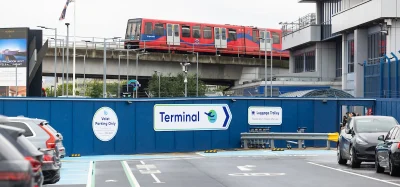Towards a quieter future: The Christchurch example
Posted: 16 June 2006 | K McAnergney, Manager - Airport Planning, Christchurch International Airport | No comments yet
Summary of an address to the Aviation and Environment Summit 2006 by K McAnergney, Manager – Airport Planning, Christchurch International Airport. Christchurch International Airport Ltd (CIAL) is the Airport that provides the main aviation gateway to the South Island of New Zealand. But where on earth is New Zealand? Comprising three principal islands – North, South and Stewart – it is situated in the temperate band of the South Pacific diametrically opposite Western Europe. It is approximately three hours flying time South East of the Australian cities of Sydney and Brisbane.
Summary of an address to the Aviation and Environment Summit 2006 by K McAnergney, Manager – Airport Planning, Christchurch International Airport.
Christchurch International Airport Ltd (CIAL) is the Airport that provides the main aviation gateway to the South Island of New Zealand. But where on earth is New Zealand? Comprising three principal islands – North, South and Stewart – it is situated in the temperate band of the South Pacific diametrically opposite Western Europe. It is approximately three hours flying time South East of the Australian cities of Sydney and Brisbane.
The population of New Zealand is approximately 4.13 million and Christchurch is the main city in the South Island with a population catchment of approximately 345,000.
Join us live: Shaping the Next Generation of Hold Baggage and Air Cargo Screening
Join us live for an insightful webinar on 11th December at 14:00 GMT, in collaboration with Smiths Detection, as we explore the strategic balance of operational efficiency, regulatory compliance, and sustainability in high-volume security environments.
This session offers a focused look into future-proofing your security strategy.
Key learning points
- Cost Reduction: Strategies to minimize bag travel time while simultaneously reducing operational costs.
- Regulatory Roadmap: Insights into the next wave of regulatory changes and their impact on future investment decisions.
- Sustainable Systems: Practical approaches to building sustainability into security systems and lowering the total cost of ownership (TCO).
- Scalable Solutions: Real-world examples of scalable systems supporting current airport growth and preparing for tomorrow.
Register now for expert insights, case studies, and actionable strategies on operational efficiency!
For the year ended December 2005, CIA handled more than 4 million domestic and 1.5 million international passengers; 102,000 tonnes of cargo spread across 87,000 scheduled aircraft movements.
In addition to links to other New Zealand cities, CIA is linked by aircraft movements to Sydney, Brisbane, Tokyo, Osaka, Seoul, Singapore, Dubai (via Sydney), Los Angeles, Nadi and Rorotonga.
CIA promotes itself as the Gateway for the best of the South Island, which has a tourism and agriculturally based economy in a clean green, safe and politically stable environment. Owing to our close political / fiscal / cultural / physical relationship with Australia, we place great emphasis on fostering trans-tasman flights between Christchurch and the Australian cities of Sydney, Brisbane and Melbourne.
The timing of these flights is determined by slots at curfewed airports in Australia but is affected by time differences (NZ is generally two hours ahead of these Australian cities). As an example, aircraft depart Christchurch each day from 6 a.m. and fly Christchurch to Sydney; Sydney to Christchurch; Christchurch to Brisbane and Brisbane to Christchurch, arriving back in Christchurch at approximately midnight. Thus, these aircraft achieve a high plant use ratio and can be scheduled for overnight maintenance at Christchurch.
Because Christchurch, New Zealand is at the end of the earth in terms of aircraft flight routes, a major part of our company strategy is to remain uncurfewed and unrestricted regarding the aircraft types that can operate here. This has been especially important with regard to Antarctic Air logistic support for several national science programmes, which use military transport aircraft to fly between Christchurch and the Ross Sea area of Antarctica.
Non-curfewed, non-restricted operations have enabled CIA to grow its business both for passengers, cargo and overnight freight and courier operations in an Island nation. With the aircraft fleet utilisation, reasonably priced air travel to Australia and other destinations is available to all New Zealanders.
Decisions relating to maintaining the non-curfew status of CIA were first made and acted upon in the mid 1970s by the then- Christchurch Airport Authority which was a fiftyfifty joint venture partnership between Christchurch City Council and the New Zealand Government (The Crown).
They were extremely concerned at the rapid expansion of the Christchurch Metropolitan area and, particularly, development of residential housing towards Christchurch International Airport. It must be remembered that at this time a range of Chapter 1 aircraft such as B737, B707, DC8 and DC10 were regularly used in serving a growing domestic and international aviation market, and the city’s air logistics link to Antarctica was supported by aircraft such as the C141 Star lifter and C130 Hercules. In addition, many of these aircraft were being regularly maintained at CIA and night time ground running of engines after maintenance was a regular event. Citizens of Christchurch were very parochial supporters of ‘their airport’ but as new suburbs sprang up nearer and nearer the airport noise complaints began to occur.
After considerable research by staff and consultants, a set of Airport Noise Exposure lines was produced indicating a predicted Ldn50dBA line located between the airport and the approaching edge of urban residential subdivision of land and consequent development of residential housing. Together with other supporting strategies relating to limits on urban infrastructure such as reticulated water supply, sewer, storm water, electricity and roading, an ‘urban fence’ with associated town planning rules was soon in place. The outcome of this was that the city of Christchurch had a type of land use plan which, among other things, protected its airport from encroachment by noise sensitive land uses. Unfortunately, the same type of land use planning was not in place in small-but growing-townships which lay beneath the approach and departure flight paths approximately 7 – 12 kms from the runway threshold where residential development was still occurring under prescriptive activity based legislation.
In the late 1980s, major changes to land use planning and its administration were signalled and Christchurch International Airport Ltd, the company that owns the airport, participated fully in consultation and submission processes which accompanied the preparation of the New Zealand Standard ‘Airport Noise Management and Land Use Planning’, which “established maximum acceptable levels of aircraft noise exposure around airports for the protection of community health and amenity values whilst recognising the need to operate an airport efficiently”.
This Standard uses the Air Noise Boundary concept for establishment of compatible land use planning and sets limits for the management of aircraft noise by means of a 24 hour daily sound exposure averaged over a three month period. It suggests that for the preparation of predicted noise contours around airports for planning purposes the FAA Integrated Noise model be used.
When the Guideline Standard was being prepared, the New Zealand Government was preparing a major piece of legislation known as the Resource Management Act 1991 and, once again, CIAL took every opportunity to fully participate in the public and industry consultation and submission process at each stage of the proposed legislation progress before it finally became law.
The purpose of this Resource Management Act, in summary, is to promote the sustainable management (i.e. managing the use, development and protection) of natural and physical resources to meet the reasonably foreseeable needs of future generations whilst safeguarding the life supporting capacity of air, water, soil and ecosystems and avoiding or mitigating any adverse effects of activities on the environment. CIA is defined as a major “physical resource” under this legislation.
It has often been stated that there was “no equivalent to this in previous legislation”.
The reasons behind CIAL’s full involvement in the preparation of the Standard and the law was that, through membership of Airports Council International (ACI), it had become more fully aware of the noise problems facing many of the worlds airports. Full advantage was taken of meetings of the ACI Environment Committee through our CEO at the time, George Bellew, who was a member and sometime chairman of that committee. On one occasion the Environment Committee met in Christchurch and CIA staff established working relationships with several of the most skilled airport noise management professionals such as Joop Krul (Amsterdam),Volker Nitsche (Dusseldorf now at Frankfurt) and Erik Nielson (Copenhagen). This enabled CIAL to understand the problems of others and to evolve strategies to hopefully ensure that such problems could be avoided at Christchurch to allow CIA to continue to operate and develop uncurfewed and non type restrictions on its existing site.
A distillation of the ACI advice led to the strategy of using a suite of land use objectives, policies and rules to influence urban growth and rural development of local planning authorities so that CIA could grow on its present site in terms of the ultimate capacity of its existing cross runway system and to operate uncurfewed.
To date, CIAL has been successful in having noise compatible land use objectives, policies and rules included in land use planning documents, which local planning authorities are required to develop and implement under New Zealand’s Resource Management Act.
These rules, which are seen as restrictions of property rights by some, have been challenged at every step, but CIAL has used the best legal and professional advice available to rebut all challenges. Membership of ACI and access to information case studies and advice have been of assistance in preparing evidence for court cases and, in fact, Anne Murray of Vancouver Airport, a stalwart of ACI, appeared as an expert witness in a recent court case to cement in place the rules relating to restricting urban growth to land lying outside the Ldn 50dBA contour.
The noise contours around CIA are plotted out to Ldn 50dBA and have been drawn in terms of the ultimate capacity of the existing runway system, the predicted fleet mix of aircraft and their destinations, and runway use and flight paths.
The quid pro quo, or other side of the coin, is that in return for the land use compatibility and the airport protection outcome, CIAL must implement and adhere to a noise management plan which will ensure noise levels at the predicted Ldn 65dBA contour are not breached. This will be achieved by continuing to refine existing aircraft operator and airspace management agreements with stakeholders and preparation of a validated three month average day noise contours using aircraft movement data input into the FAA I.N.M.
Join our free webinar: Beyond silos: How ecosystem thinking elevates the airport experience
In today’s complex aviation landscape, airports are moving beyond siloed operations to embrace a new era of collaboration. This webinar focuses on how leading airports are using ecosystem thinking to adapt, personalize, and continuously improve every touchpoint, boosting both passenger satisfaction and non-aeronautical revenue.
Date: 13 Nov | Time: 10:00 GMT
REGISTER NOW TO SECURE YOUR SPOT
Can’t attend live? No worries – register to receive the recording post-event.

















